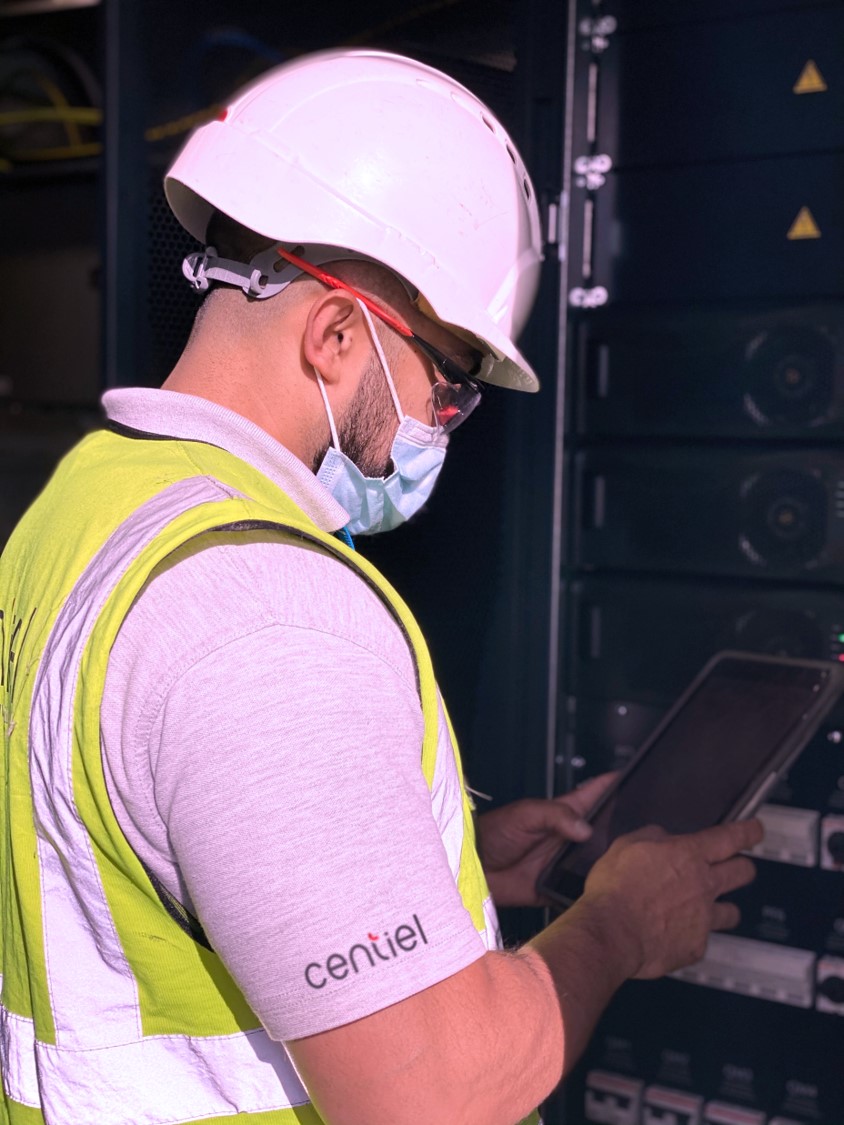Monitoring critical power

An ‘uninterruptible power supply’ (UPS) protects critical loads in the event of a power outage. The UPS, backed up by batteries, will automatically take the place of the mains supply to provide back-up power to elements such as emergency lighting and critical IT equipment.
This is a sponsored article.
For medical facilities, the UPS can be set up to support the load supplying operating theatres and intensive care units. Therefore, regular preventative maintenance and monitoring of the UPS and associated batteries is essential. Monitoring can be one of the cheapest exercises any facility can undertake, and yet, also one of the most valuable.
Unresolved remedial recommendations can lead to system failures, which can literally be life-threatening. UPS systems are designed using essential components which are classed as consumables, such as capacitors, fans and batteries, all of which require regular preventative maintenance checks and have a recommended age for replacement. For example, fan failures can lead to overheating of the UPS causing a potential shut down. In addition, if capacitors are not replaced within the recommended timeframe, this can lead to substantial component failure.
It is usually not practical for on-site personnel to check a UPS visually multiple times per day for a status update. In practice, many UPSs are tucked away from day-to-day business areas and not checked for long periods of time. However, remote monitoring provides a simple solution.
Remote monitoring enables a visual status of the UPS to be monitored without the need to check the system physically. This can be easily achieved using an inexpensive Simple Network Management Protocol (SNMP) card. The SNMP card is connected to the facility’s network which allows an organisation to receive alerts about events taking place in real-time. This means that in the event of an outage or, in the worst-case scenario, a system fault, the reaction time of on-site personnel is significantly quicker, resulting in reduced Mean Time to Repair and increasing the availability of the system.
Setting up the SNMP card is straightforward as it is ‘plug-and-play’ technology. All that is needed is a connection to the facility’s network. Once completed, the UPS supplier will provide support to ensure that specific alerts are set up in-line with UPS system’s events log. For example, in the event of a power outage, an event alert is sent to the assigned destination in real-time so that action can be taken immediately. The SNMP is crucial to the long-term monitoring of the UPS and its environment, as well as for ongoing system management.
In a medical facility, in addition to an SNMP card, the UPS may need to communicate with Theatre Control Panels (TCP) that are located in operating theatres. These TCPs provide a form of monitoring and control for clinical staff, alerting them to any change of status of the UPS and other installed technology during operations and procedures. It is important to note that not all UPS systems are designed with the number of volt free contacts required to send the alarm signals to the TCPs. It is important to check with the UPS manufacturer ahead of purchasing to ensure this can be achieved.
Batteries are also an essential part of a UPS system. To comply with NHS England’s health technical memoranda regulations, medical facilities are required to have a 10-year, fire retardant, screw terminal battery block. In most circumstances, these battery blocks are required to provide 60 minutes of ‘run time’ or autonomy and need to be configured with multiple strings. In the event of an outage, power from the batteries will continue to support critical functions on site for this agreed amount of time. Batteries can also be monitored remotely via a Battery Analysis & Care System (BACS) which can also be integrated into the network.
In addition to constant remote monitoring, regular preventative maintenance visits (PMV) are essential. Twice yearly PMVs by manufacturer trained engineers will ensure that the UPS is performing optimally, and that the correct firmware upgrades are implemented. Critical components such as capacitors and fans are given a full health check to prevent the risk of downtime.
UPS systems are powerful fail safes for medical facilities. The cost of not monitoring could be catastrophic in terms of damage to equipment, not to mention the consequences of loss of the critical load if the UPS is protecting power for patients in the operating theatre. UPS monitoring should therefore be seen as an inexpensive, yet necessary, aspect of facilities management.
Centiel’s experienced team is always available to discuss and help evaluate the best approach, to UPS design, installation and management to suit any facility’s critical power protection needs. For further information please see: www.centiel.co.uk

